Why Does My Solar Light Turn On During the Day? Common Causes + Fixes Compared
It’s annoying, isn’t it? You set up those sleek solar lights to brighten your backyard at night, only to catch them glowing at noon like they’re staging a protest. I’ve been there—squinting at my garden stakes wondering if they’re broken or just confused. If your solar lights are staying on during the day, don’t toss them yet. The issue often boils down to a few fixable culprits: a wonky light sensor, a poorly placed panel, or some sneaky wiring glitch. In this deep dive, we’ll unpack why solar lights act up, compare how brands like Bitpott stack up against generic models, and walk through practical fixes to get your setup back to nocturnal duty. With a little know-how, you can save energy, extend your lights’ lifespan, and keep your landscaping glowing when it’s supposed to—under the stars.
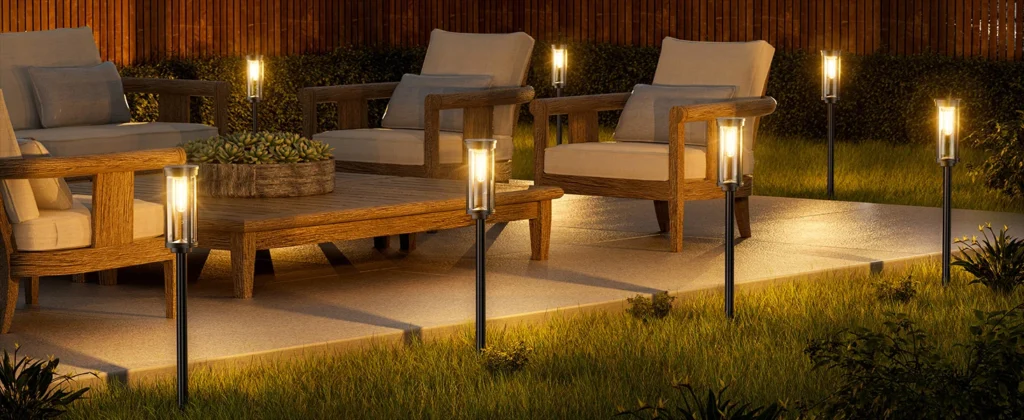
Core Cause: Sensor Issues or Panel Obstructions
At the heart of most daytime-lighting woes is the light sensor, the brain that tells your solar light when it’s dark enough to shine. These sensors detect ambient brightness, flipping the switch off during the day to save stored energy. But if the sensor’s faulty or blocked, your light might stay on, draining its battery faster than a phone on a video binge.
Common triggers include:
- Dirty Sensors: Dust, pollen, or bird droppings can coat the sensor, tricking it into thinking it’s nighttime.
- Physical Obstructions: Overhanging branches or nearby structures cast shadows, confusing the sensor’s light readings.
- Defective Units: Cheap sensors in generic models may fail early, misjudging daylight as dusk.
I once had a light stuck “on” because a spider web blanketed its sensor—nature’s prank. Cleaning it fixed the issue in seconds. For persistent problems, the sensor itself might need a swap, but let’s explore how design differences play into this.
Bitpott vs. Generic Designs: Sensor Smarts Compared
Not all solar lights are created equal, and the gap between premium brands like Bitpott and budget generics often shows in sensor tech. Bitpott’s smart light sensors use advanced photodiodes that adjust dynamically to ambient brightness, reducing false triggers. They’re rated for 20,000+ hours and come with IP65+ coatings to fend off dust and rain, making them less prone to grime-induced errors. Generic models, often slapped together with basic photoresistors, can’t match this precision—they’re more likely to misread light levels, especially in cloudy weather or partial shade.
Here’s the breakdown:
- Bitpott Sensors: Auto-calibrate to local light conditions; self-diagnostic chips flag issues via blinking patterns.
- Generic Sensors: Fixed thresholds (e.g., <10 lux to activate) struggle with gradual light changes, like dawn or dusk.
- Energy Impact: Bitpott’s efficient sensors cut daytime drain by up to 15% compared to generics, preserving battery for night use.
In my own yard, swapping out a no-name light for a Bitpott model stopped the daytime glow instantly—no more guessing games with the sensor. Investing in quality upfront saves headaches and replacement costs down the line.
Positioning Errors: Location, Location, Location
Even the best solar light will misbehave if it’s placed poorly. Solar panels need unobstructed sunlight for 6-8 hours daily to charge fully, and sensors need a clear view of the sky to gauge day versus night. Common placement mistakes can throw everything off.
Watch out for:
- Shade Traps: Panels under trees, awnings, or eaves get too little sun, weakening the battery and confusing the sensor.
- Artificial Light Interference: Nearby porch lights or streetlamps can trick sensors into thinking it’s still day, keeping lights off at night or on during the day.
- Angle Issues: Panels tilted away from the sun’s path (e.g., north-facing in the Northern Hemisphere) undercharge, stressing the system.
I learned this the hard way when my path light, tucked under a rose bush, stayed on all day—its panel was starved for sunlight. Moving it two feet into an open spot fixed it. Pro tip: Use a compass app to ensure panels face south for max solar energy capture, and keep sensors clear of artificial light sources.
Wiring & Connection Issues: The Hidden Culprits
While solar lights are mostly wireless, internal connections between the panel, battery, and LED can still go haywire. Moisture is the big villain here—rain or sprinkler spray can seep into poorly sealed units, corroding wires or shorting circuits. This can make the light think it’s always “on” time, regardless of daylight.
-6-1024x400.webp)
Connection problems to check:
- Loose Wires: Vibrations from lawnmowers or foot traffic can loosen internal contacts, especially in budget models with flimsy builds.
- Moisture Damage: Non-IP65 units let water creep in, frying sensors or control chips. Look for rust or foggy lenses as red flags.
- Battery Misalignment: A jolted battery might disrupt the circuit, causing erratic on/off behavior.
Last spring, one of my lights flickered like a disco ball after a storm. Popping it open revealed a damp connector—drying it and resealing with silicone saved the unit. Higher-end models like Bitpott, with their robust seals, dodge these issues more reliably, but even they need occasional checks in wet climates.
Maintenance Comparison: Keeping Sensors in Check
Like any outdoor gear, solar lights need a little TLC to perform. Neglected sensors or panels can accumulate grime, cutting efficiency and triggering daytime operation. How often should you clean or recalibrate? It depends on your environment and the light’s quality.
Maintenance needs by type:
- Bitpott Models: Clean panels and sensors every 3-6 months with a damp cloth; IP65+ coatings reduce buildup. Recalibration (via reset button) needed only after major weather events.
- Generic Models: Monthly cleaning in dusty or pollen-heavy areas; no recalibration option, so sensor issues often mean replacement.
- Universal Tip: Check for cloudiness on panels—hazy surfaces drop solar energy conversion by up to 20%.
I set a reminder to wipe down my lights twice a season, and it’s kept them humming. For recalibration, Bitpott’s reset chip (a quick press after cleaning) realigns the sensor to local light patterns, a feature generics lack. Regular care extends light life and keeps that solar energy working efficiently.
DIY Fixes: Getting Your Lights Back on Track
Before you call it quits and buy new lights, try these straightforward fixes. Most daytime lighting issues don’t mean a defective product—just a setup that needs tweaking.
Step-by-step troubleshooting:
- Clean the Sensor and Panel: Use a soft cloth with water or mild soap to remove dirt. Avoid abrasives that scratch the surface.
- Reposition the Light: Move it to a spot with full sun exposure (6+ hours) and no nearby artificial lights. Test for a day.
- Check Connections: Open the unit (if safe) to inspect for loose or wet wires. Dry and secure as needed; seal with waterproof tape.
- Reset the Control Chip: For Bitpott or similar brands, press the reset button (check the manual). Generics may need a full power cycle—remove the battery for 10 minutes.
- Replace the Sensor: If all else fails, swap out the sensor (around $5-10 for compatible parts online). Bitpott’s modular design makes this easier than with no-name brands.
I fixed three of my five “broken” lights last year with just cleaning and repositioning. For stubborn cases, replacing a $7 sensor beat buying a new $30 light. Always test after each fix to pinpoint the issue without overcomplicating things.
Conclusion: Simple Tweaks for Night-Only Shine
Daytime-glowing solar lights can feel like a betrayal of their eco-friendly promise, but the fix is usually within reach. Whether it’s a grimy sensor, a shaded panel, or a sneaky wiring glitch, most issues stem from setup or maintenance oversights—not a busted product. Brands like Bitpott, with their smart sensors and weatherproof builds, make these problems rarer, but even budget lights can be salvaged with a little elbow grease. Start by cleaning, repositioning, and checking connections before splurging on replacements. By harnessing solar energy correctly—clear panels, smart placement, and occasional upkeep—you’ll keep your lights off during the day and glowing strong at night, saving both your wallet and the planet.


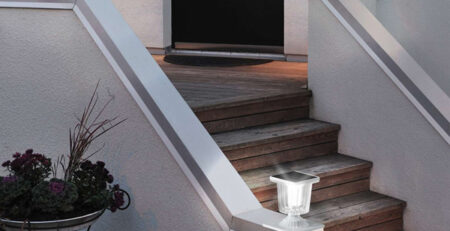
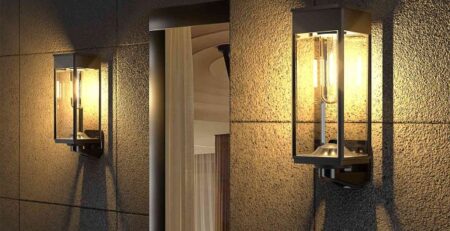
-1-1-450x231.webp)
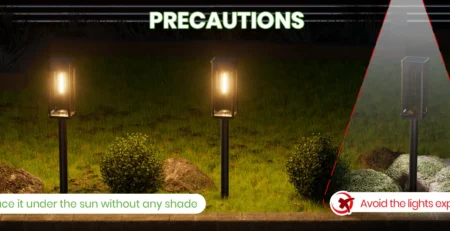



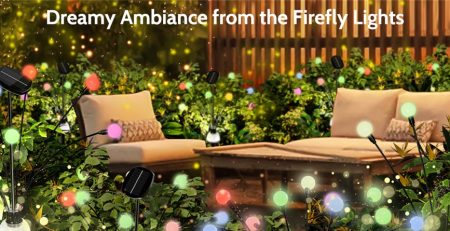

Leave a Reply